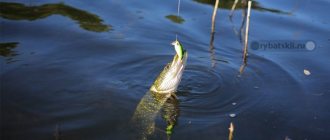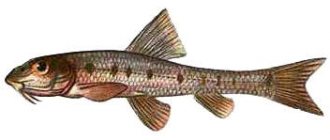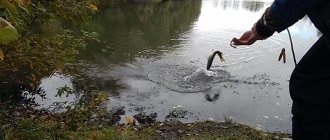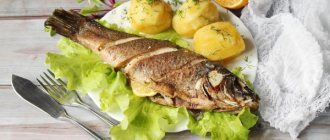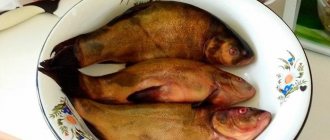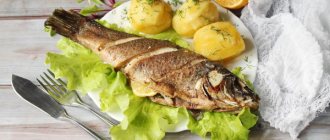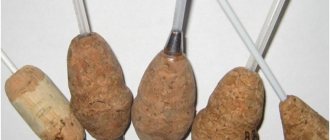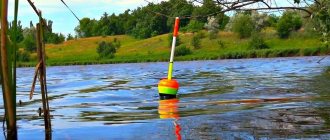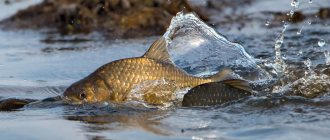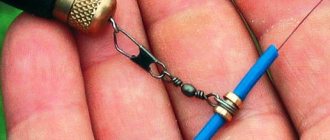In this article I will tell you about tench fishing in the spring. Where to look for tench? What to catch? And what to feed the tench? Also, I’ll tell you about the methods of catching it (tench bait).
The tench starts pecking quite early. Often he is even caught in the spring at snatches along with other fish going to spawn. Although, of course, there is no mass fishing of tench in early spring. His time has not yet come. But before spawning, sometimes there are days of good tench bite.
Lin can be called a loner individualist . There are no such schools as other fish in the tench community. At least the tench don't flock together for feeding. And only twice a year there are more than one tench in one place. This is the time of spawning and the time of pre-winter waiting and going deeper into wintering pits. Tench mostly hibernate in winter, although there are also cases of it being caught from the ice. But this is an exception to the rule.
When to catch?
The most suitable period for fishing will be the end of spring and the beginning of summer.
Although such terms do not apply to all regions. But in central Russia this is exactly the case. Everyone knows the habits of tench, which can irritate the most patient angler. This is his tendency to tease the worm long and hard, causing the float to sway, tremble, and float somewhere. And if you hook it, you will only pull the hook of the tench out of its mouth. But tench have such infantile habits in the summer, when the fish are well-fed and cautious. In spring, tench bites are quite decisive and strong. At this time, the tench eats off after spawning and therefore bites so confidently and even greedily on the float rod and donkeys.
Features of catching tench in April
In different regions, fishing conditions in April differ significantly.
There is still ice in the north at this time. But in such regions, as a rule, there is no tench. Even further south, the ice cover has already disappeared by April, and it is in such conditions that one most often has to catch this fish in the second month of spring. Even further south, there is no ice throughout the winter, and the behavior of the inhabitants of reservoirs here differs significantly from that which is typical for the middle zone. Read: Technique for throwing a feeder into one place without errors
Be that as it may, the water in April is still very cold for tench, which loves warmth. Therefore, even if the fish is already feeding, one cannot count on high activity. You need to be prepared for hard fishing, which requires a lot of effort and a fairly high level of fishing skill. The best time for tench fishing begins in May and continues into the summer months. However, in April in most regions you can already count on decent catches. The same cannot be said about March - in the first month of spring, it is better to avoid going out to the reservoir to fish for this fish.
Tench fishing in April is also complicated by conditions on reservoirs. It is not always possible to quickly find fish in deep water - when the water area increases, the search becomes more complicated. In addition, with the arrival of spring, the inhabitants of reservoirs begin to move a lot - much more than in winter or summer - which further complicates the search. True, tench is often caught in small ponds and lakes. Finding fish in such water areas is easier than in vast lakes, rivers and reservoirs.
Cloudiness of the water, which is typical during high water periods, can also interfere with fishing. When it becomes cloudy, the bite weakens or stops altogether.
At the same time, April fishing has significant advantages over summer fishing. The weather is already very comfortable for humans, there are still no mosquitoes and other annoying insects that, starting in June, can overcome fishermen in large numbers. If you dress and equip yourself correctly, being on reservoirs in April and catching tench is a pleasure – especially, of course, if the fish are biting.
But don't forget that spring weather can be quite deceptive. Even if the sun is shining brightly, it can be quite chilly, especially near the water where the air temperature is lower. Therefore, you should dress warmly - for example, a set of good thermal underwear and a good demi-season fishing suit will not be superfluous.
In April, tench begin preparing for spawning, trying to gain fat. The spawning itself can begin in May or June. Its timing depends not only on the region, but also on how warm or cold the spring turned out to be this year. In reservoirs where tench spawn in the last month of spring, in April you can catch a pre-spawning feast and get good catches. In order not to miss this moment, you can navigate by the buds on the alder: the fish begins to actively fatten at the same time as they bloom.
You can catch tench in April using either float or bottom tackle. Which option is better to choose depends both on the fishing conditions and on personal preferences.
Choosing the time to catch
It is best to start fishing for tench after the flood has passed and the water has cleared and become clear.
The more time it has had time to warm up, the better fishing results can be expected. The minimum optimal water temperature for tench fishing is 10 degrees. You can start fishing earlier, but in this case there is no guarantee of fish activity. After the reservoirs warm up to 10 degrees or more, the increased activity of the tench should already be noticeable when visiting the reservoir with fishing rods. You can monitor the situation on reservoirs using weather forecasts, in which this parameter is indicated along with air temperature. From them you can find out approximate numbers and thus get your bearings in order to choose a good time for line fishing. It should be borne in mind that temperatures in small and large bodies of water can differ significantly.
Usually, the closer to the end of April, the more active the tench becomes. Therefore, fishing in the second half of the month is preferable than in the first. If tench spawn in May, the pre-spawning feast will occur in the second half of April. In this case, before the fish starts spawning, you can catch a good catch if you don’t miss this very promising period for fishing.
Tench actively feeds in April in clear sunny weather. These are the days you should choose for fishing. In cloudy weather, the tench bite can also be quite good, but the fish are still less active. However, if the air temperature is high, and there is no strong wind or precipitation, it is quite possible to go to a reservoir for tench. On cloudy and stormy days, it is better to avoid fishing.
Groundbait and bait
No matter what confident statements there are that tench can be fed with cottage cheese and caught with bread baits, this fish will still never exchange a simple dung or underleaf worm for a lump of semolina or other similar bait. Probably, in Sabaneev’s time, this was the case when there was a high density of fish, but modern tench are a real connoisseur of worms, both as bait and in groundbait.
Only in groundbait the worms cannot be left in their entirety. They will run away. Usually, for feeding, worms are chopped into pieces and mixed with soil. And there is no better bait than this, simple, earthen, free. True, it is advisable to take land not just where it is necessary, but in meadows, near mole holes. This earth, thrown out of the hole by mole paws, is smooth, clean, fine-grained, as if the mole was sitting in the hole and filtering the earth through a sieve. In places where moles are found, there are many such earthen mounds, similar to waste heaps near mines.
Tench will not refuse maggots, but for the most part prefers a “sandwich” of a worm with maggots. Using feeder and other baits in tench fishing areas is harmful to yourself. You won’t attract tench with such bait, but various small fish will definitely collect near the gear.
And this, we can say with confidence, is goodbye to fishing. Tench is already a gloomy loner who shuns even his relatives, but here there is a pandemonium of bleaks, leopards and impudent roaches.
Baits and baits for catching tench in spring.
As we already mentioned at the beginning of the article, tench during this period of time gives preference to baits of animal origin. And therefore, to catch it, they use worms, bloodworms, and maggots as bait. Often the most effective work will be the so-called sandwich attachment, when several attachments are attached to the hook at once. For example, maggots and bloodworms.
Now about the bait. For catching tench, as for catching other peaceful fish, it is recommended to use bait mixtures. Some fishermen buy this bait in stores, and some make this bait themselves.
Here is one of the recipes for bait that any fisherman can make.
Compound feed or boiled millet.
Soil, its concentration should be 50 percent,
Worm or maggot.
There is no need to feed bream much in the spring and you can even refuse the starter feeding. And add bait during the fishing process, one ball every 30-40 minutes of fishing. The size of the balls should not exceed the size of a regular tangerine.
Tench fishing methods
The most effective way to catch tench in the spring is with bait. That is, for several days in a row you need to throw earthen and clay balls into which chopped worms are rolled into the same place.
And an even more effective way to catch tench is to use bait on an artificial patch of sand among aquatic vegetation. Usually, in tench habitats, in dense thickets, water lilies are mowed out at the window. Then sand is poured onto the bottom. And on this makeshift table you can clearly see earthen bait-filler and worms, although chopped into pieces, still moving and attracting tench. You can imagine how comfortable it is for the red-eyed one in such a small kitchen that suddenly appeared from somewhere. There are stems of water lilies all around, and here there is white sand and delicious food.
Choosing a place to catch tench in May using a float rod
It is best to catch tench in May in small standing bodies of water - ponds and lakes.
You can successfully fish in large lakes, and in stagnant sections of rivers, in creeks and oxbow lakes. But it is ponds and lakes that are the bodies of water where tench feel best and bite well in the warm season. You should look for fish in late spring in areas overgrown with reeds, reeds or other algae with a muddy bottom. There is a lot of food for her here. Accordingly, she willingly stays in such places.
Tench also loves snags. Debris of driftwood attracts various aquatic invertebrates, which are the usual food of this fish. In addition, snags, like algae, are a natural refuge from predators. If there is a pike in the reservoir, the likelihood that the tench will stay in areas free from grass and snags is less.
Typically, good results are achieved when fishing for tench in shallow waters in May. Here the sun's rays warm the water well to the very bottom. In shallow waters in May, various invertebrates become active, and rapid growth of vegetation also occurs here. Accordingly, tench also come here in search of food. A depth of half a meter is already enough for tench to actively peck here.
But if the water is still very cold, and the fish has not recovered from hibernation, it can stand far from the shore. Large fish also prefer to stay at depth.
Therefore, if you are determined to catch trophy tench, it is also better to pay attention to deeper areas
Tackle
To fish in such a separate place among the water lilies, you can use a float rod, but if the window is small, then you can quite successfully fish with a rod with a side nod. To do this, you will need a long lightweight carbon fiber rod, on the top of which is attached a nod that extends to the side. The bait is lowered vertically into the window among the grass on a line dropped from the tip of the rod. It turns out to be a kind of analogue of winter fishing.
Report on catching roach using a reelless reel
Flashing methods
Fishing for pike on girders on the last ice on lakes
What gear is used to catch tench?
Before going to a pond, it is important to familiarize yourself with the peculiarities of fishing for freshwater fish. You will also need to prepare suitable gear, baits and bait.
Features of fishing with float tackle
Perhaps the most popular gear for catching tench is a float.
Tench is an individualist that lives in thickets, so you should look for it in shallow areas with underwater vegetation. The length of the rod for float fishing should reach 5-6 meters. The recommended main line diameter is 0.25 mm. To make a leash, it is better to use 0.18 mm fishing line.
You will also need:
- float;
- lead pellets for the weight;
- hooks No. 8.
Tench is an omnivorous fish. In search of food, a representative of the carp family buries itself in the mud, so bites will occur even if the bait sinks into a layer of mud.
The best spring baits in early spring in March-April, which attract the attention of even well-fed fish, are considered to be: dung worms, tinted red maggots, bloodworms, and small leeches.
Tench really like a sandwich of maggots and worms and in the spring in March-April it is the best bait when catching tench on a float
In May, you can also add vegetable baits to the above listed baits - semolina, dough, mud, corn.
The bait mixture can be purchased at a fishing store or prepared with your own hands by combining a small amount in a deep container:
- steamed corn;
- chopped animal bait;
- cereal bran;
- oatmeal;
- wheat flour;
- makuhi.
How to properly load a float on a fishing rod when fishing in still water.
Bait should consist of coarse-grained components. You can use flour or oatmeal as a binding ingredient.
Catching tench in the spring with a float rod - video from the shore of the reservoir:
Features of fishing with a feeder
To catch tench on a feeder, you should find a clean and quiet body of water with rich underwater vegetation. A representative of the carp family prefers shallow water areas in the spring, so fishing should begin from such places.
For bait you can use boilies, corn and animal baits - a worm, a bunch of maggots.
When fishing on a feeder, boilies are important
Bait can be purchased at a fishing store. A mixture intended for catching tench, carp, as well as a universal option is suitable. It is recommended to add a small amount of canned corn and maggots to the bait.
Feeder rigs for tench fishing
Feeder tackle is assembled on the basis of a fishing rod, the length of which reaches 3 meters. The casting of the form should be within 10-40 degrees.
The reel used is inertia-free and has a friction brake. The functions of the main fishing line are performed by a monofilament fishing line, the diameter of which reaches 0.18 mm. The size of the hooks depends on the size of the nozzle.
Note! Feeders are mounted on a fishing line using a symmetrical loop; this is the best installation option for standing reservoirs.
A symmetrical loop is one of the best types of installation for standing water
Fishing for tench on a feeder in spring in April:
Features of donk fishing
For spring fishing for tench on a donk, a simple tackle, the length of which reaches 2-3 meters, is suitable. A spinning reel is fixed to the bottom, the spool volume of which is in the range of 2000-3000.
A fishing line (0.25-0.3 mm) is wound onto the reel. When choosing a sinker, you should give preference to the sliding flat option. A pair of leashes with No. 8 hooks are tied to the main line. One of the leashes is fixed above the weight, and the second to the swivel.
When fishing for fish on a donk, you should use a bait mixture that contains a small amount of:
- steamed hemp;
- chopped crawlies;
- cake;
- steamed corn kernels.
When you arrive at a pond, you can add an earthworm and a red worm to the mixture.
Crawlers, caddis flies, bloodworms, and bark beetle larvae are placed on the hooks.
Donka with a spring for bait
Catching tench with a spring
A spring is considered a variation of a bottom feeder, which is made on the basis of thin metal wire or plastic. The shape of the spring is elliptical or spindle-shaped. A pair of leashes with small hooks are fixed from the back of the feeder. To make leashes you will need to use thin monofilament leashes or braided leashes.
Spring for catching tench, crucian carp, crucian carp
The process of fishing a tench with a spring cannot be called complicated. First of all, the fisherman prepares a viscous and fairly dense bait mixture, which includes boiled millet.
Bait is placed on the hooks, and feeders are filled with bait porridge. Red and earthworms and steamed peas are most often used as bait. You can also purchase maggots, which are planted in groups of 5 at a time.
It is very important that the bait is fresh, otherwise even a hungry fish will not want to eat it.
Before planting, worms and maggots are treated with a small amount of hemp and anise oil. The hooks are hidden in the bait, inserted between the coils of the spring. After this, the angler checks with a couple of casts how tightly the mixture is held in the feeder when it hits the surface of the water.
The tench, attracted by the aroma of the bait, approaches the feeder and sucks up the mixture, opening its mouth wide. This way the hooks will end up in the fish's mouth. After this, the fish, suspecting something was wrong, makes a sharp jerk.
If the fisherman took care of selecting the correct weight of the feeder, then at this moment self-notching should occur. However, you shouldn't tempt fate. As soon as sharp jerks in the tip of the tackle appear, you should hook and bring the fish ashore.
Fishing with a jig with a side nod
Jigs are often used by anglers when fishing for tench in the spring. When equipping a fishing rod with a side nod, it is important to take into account the following nuances.
- The recommended rod length reaches 5-7 meters.
- A reel with fishing line is tied to the tackle form. The thickness of the monofilament is in the range of 0.18-0.20 mm.
- A dung worm is attached to the hook, and a lead jig is attached to the tip of the fishing line.
- The tip of the rod is equipped with a side nod made from a plastic bottle. The side nod clearly determines the moment of hooking and makes the jig play.
Interesting to know! In order to change the fishing distance, you should move or spread the knees of the tackle.
Side nod design
Feeder tackle
Standard bait is used, for example a worm, bloodworm, and so on. The fishing rod itself is chosen directly by the fisherman according to his taste. The basic rule is the strength of the gear. The tench is not only very strong, the fish constantly tries to entangle the equipment among snags or algae. The top should be about 13 grams to notice any bites. This fish bites especially, you can not notice the bite for a long time and pull out an empty hook. The top of the tackle plays a very important role here.
If a feeder is used, its size should not be large. Approximately 10 grams of food can be placed in the container. If you use the cage option, the size should be smaller than a matchbox. Such a volume does not move from its place, and does not get bogged down in silt. Hook number 10 is considered the best option. The acceptable diameter of the leash is 0.14 millimeters. The maximum length is 55 centimeters.
Read: At what time and with what baits should I catch tench?
